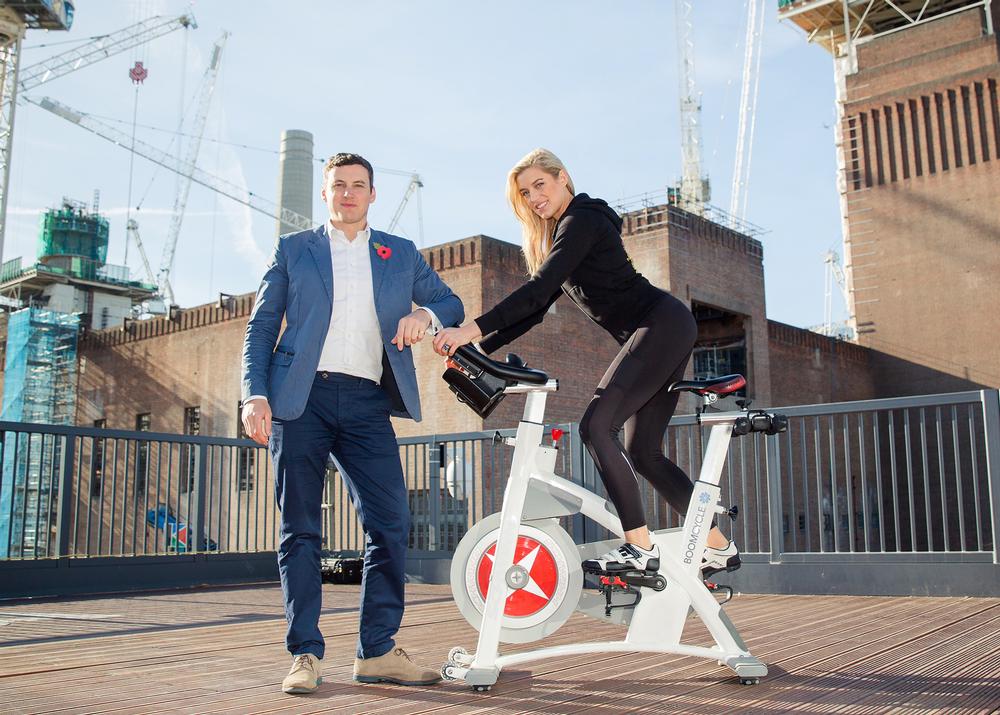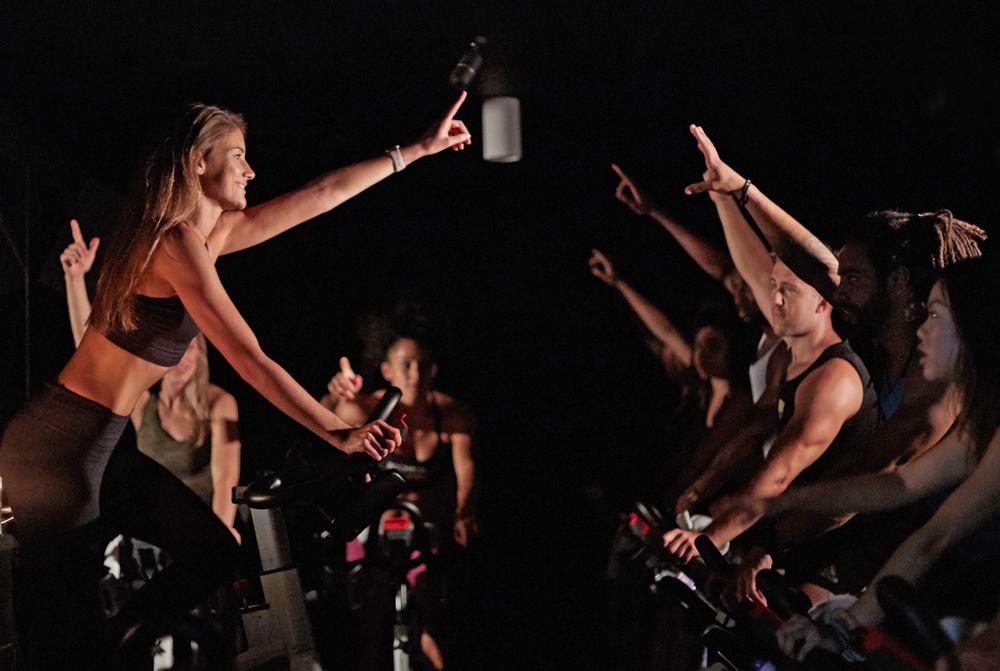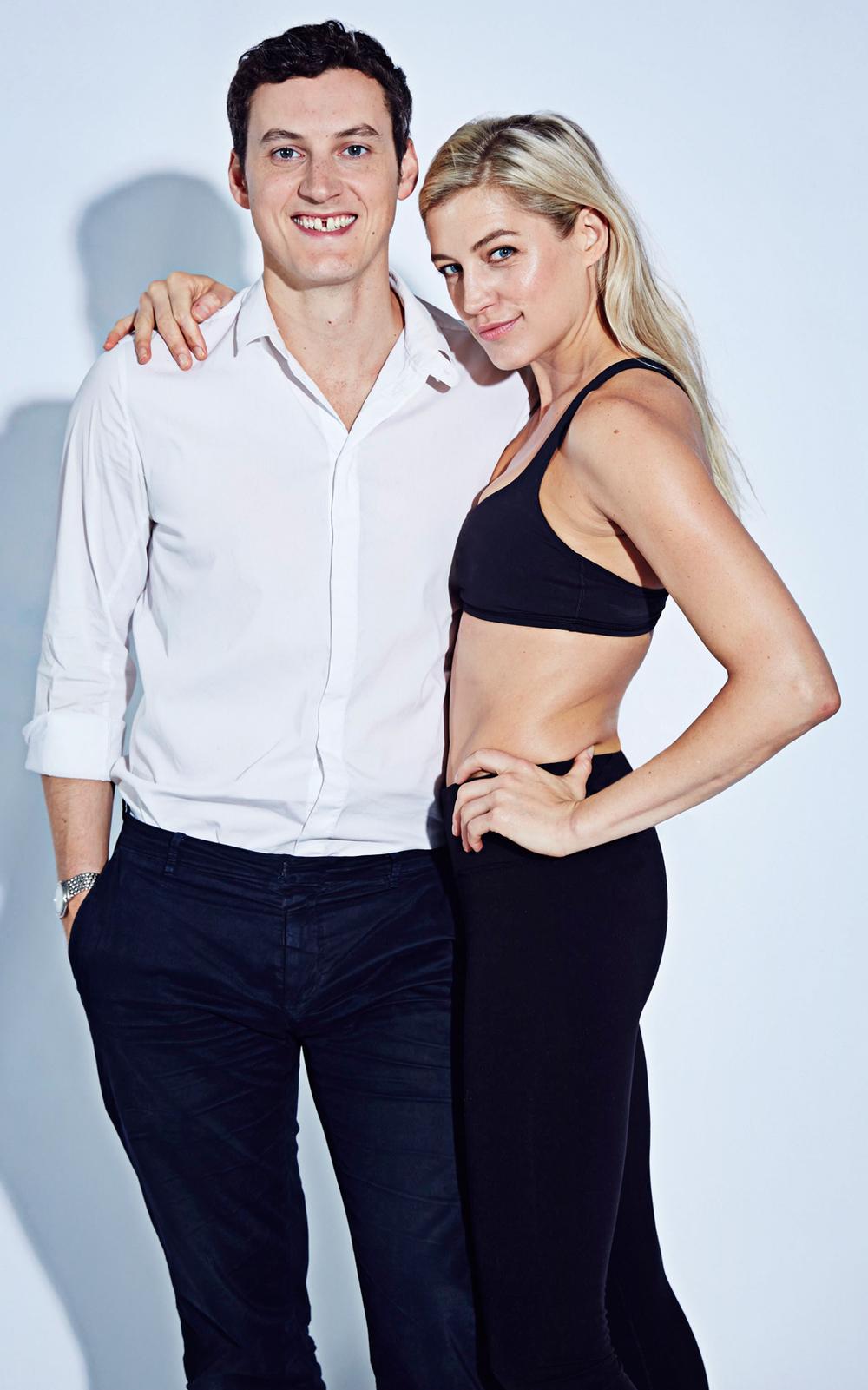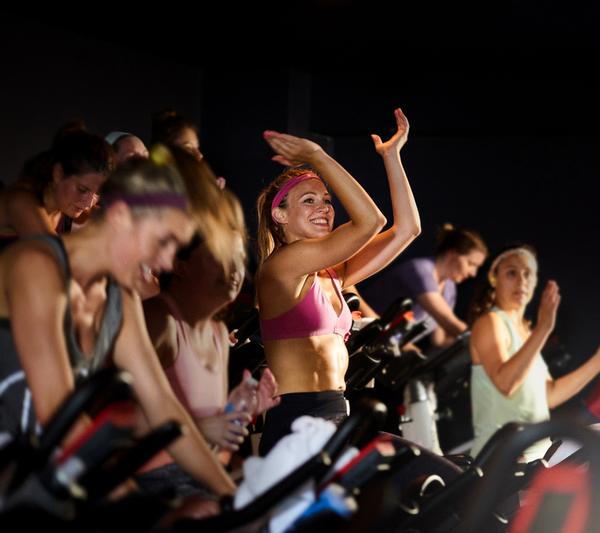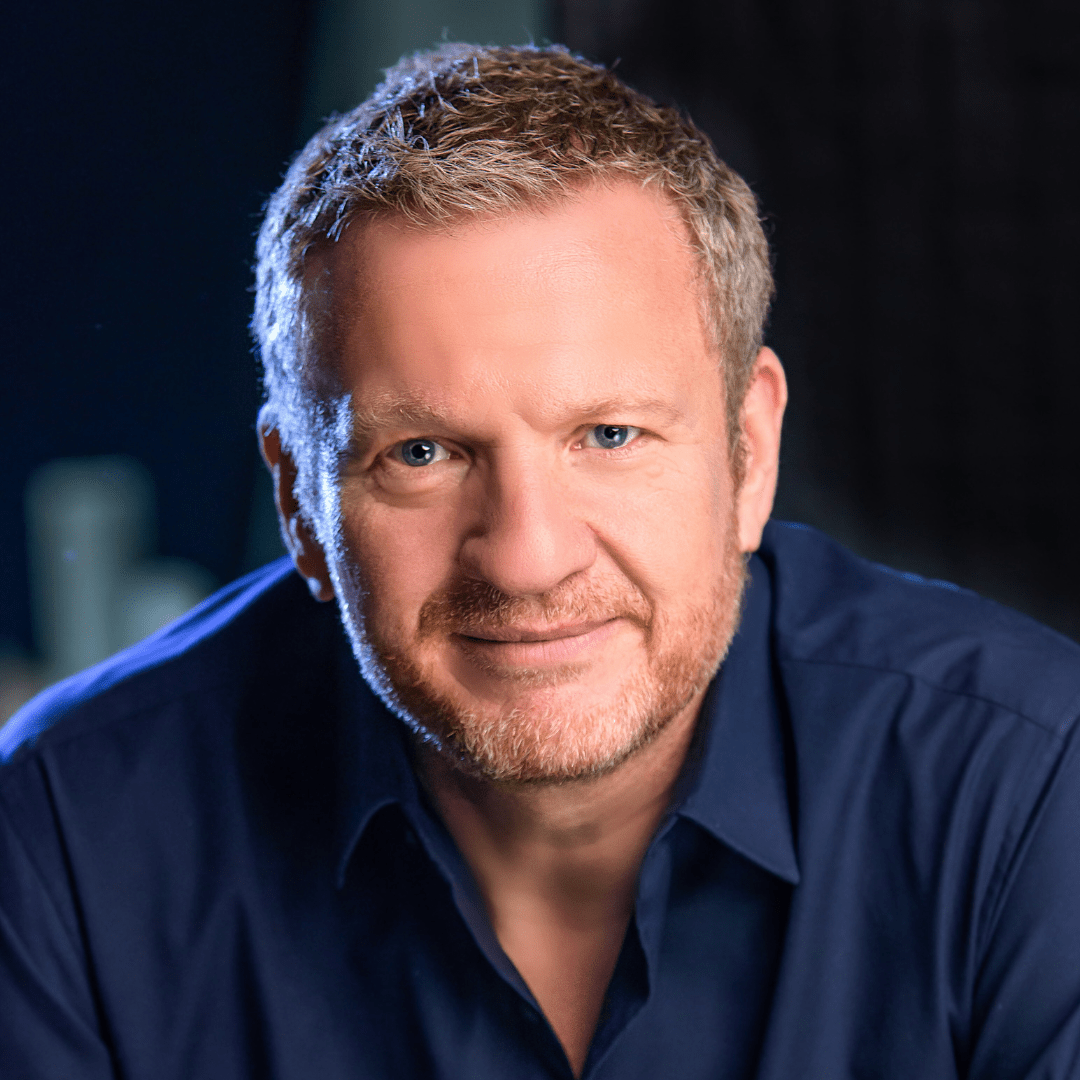What led you to create your own cycling studio in London?
HR: Before Boom Cycle, I worked as a model and that brought me to London over a decade ago. At that time, only a handful of gyms had indoor cycling classes, and they were nothing like the classes I used to take in the US, where I’m originally from. That was when I first considered starting my own indoor cycling gym. But I was still modelling at the time and knew I was travelling too much to successfully start and run a business.
But then I met my now husband and business partner – the British entrepreneur Robert Rowland – and decided to stay in the UK permanently. It meant I finally had the opportunity to turn my cycling studio daydream into a reality.
Robert, how did you go about turning Hilary’s daydream into a reality?
RR: When we first started discussing the idea, Hilary was viewing the studio essentially as a hobby. However, as we began to develop the business model, we realised there was a significant opportunity – not just to create something other people might want, but to also change the way people interacted with fitness.
What I mean by that is that we set out to make fitness fun – no longer a chore that people had to tick off the to-do list, but rather something they looked forward to as the highlight of their day. We wanted to show people that fitness didn’t have to be a strict, serious affair.
It’s so important to have a strong vision like that behind your brand. To succeed in the long term, there has to be a point to what you’re doing: a sustainable and practical reason for your business to exist. There’s no point setting out with a shiny brand if you don’t have a clue what the point behind it is.
You opened the first Boom Cycle in east London in 2011 – but it wasn’t all plain sailing. Tell us more…
HR: When Boom Cycle Shoreditch opened, it was the first large-scale, indoor cycling-focused boutique studio in the UK. It took a few months to educate and build the market, but once we did, it was well received by the press and the public. It was something totally different and people were excited.
RR: But we hit a stumbling block when, just a month after opening the first club, our investor went into administration. It came completely out of the blue: the main backer of the fund was facing extradition for crimes outside the UK, so they felt it best to close the fund. It all came as quite a surprise to us!
We’d been planning to roll out the concept with their ongoing support, so clearly this was a big blow. But we just said to ourselves: ‘Well, this is the position we’re in – we’re going to have to get ourselves out of it.’
We hadn’t set out to own our own business and clean its toilets, but that’s where we found ourselves: switching from the role of receptionist to cleaner, marketing department to CEO from one second to the next. We had many times when we thought we were weeks from closing the doors.
We had a year of working like that, and it took several years to really feel that we had a stable business. However, quitting or folding was simply never an option in our minds.
So what happened next?
RR: Once our first cycling studio was on an even keel and performing well, we once again began looking at the possible expansion options.
We’d been having ongoing conversations with Oakley Capital, but we’d always been too small for them. However, when we went back to them in 2013, they had just launched a new fund: Pembroke VCT.
Pembroke already had a strong investment portfolio in the wellness sector, including Plenish Juice, KX Gym and Sourced Market. It was a clear match for both of us.
In addition, I think Pembroke saw that we’d created a clear and achievable blueprint for a successful, expandable business – a great product with an experienced team who were capable of growing Boom Cycle to many more sites across London and the UK.
Boosted by the funding from Pembroke, we opened our second location in Holborn at the end of January 2014. Our third studio opened in Hammersmith in July, and our fourth – Battersea – will open soon.
We secured an additional £2.1m in funding from Pembroke VCT and Prism Finance in June of this year, to drive our next phase of growth.
You now have four studios. How has the model evolved since 2011?
HR: Massively! While our overall goal for the business and what we’re trying to do has never changed, the route to how we achieve that has. For example, about three years ago we simplified the pricing, improved marketing and communications, and focused on consistency of rides across all sites, plus we added hand weights to workouts in 2015.
RR: As a result of this work in 2015, we grew 100 per cent in a single year. Since then, we’ve continued to go from strength to strength.
HR: At our two new London locations – Hammersmith and Battersea Power Station – we’ve tweaked the model again. These sites are much bigger than any of our previous studios. We have larger, standalone recovery shake bar areas, a much larger retail offering and more chill-out space for our riders to sit and enjoy the venues – but also to work, with charging points for phones and laptops.
Will you launch more studios?
HR: We’re planning to open more in London, but also nationally. We’ll probably look to expand beyond London by the time we get to studio number six or seven.
For now, though, we’re focused on getting Hammersmith and Battersea up and running – to make sure we’re delivering the proper Boom Cycle experience in each and every ride, before steaming ahead with lots of new sites.
We get almost weekly requests for licensing or franchising overseas, but we’re focused on the UK for now.
What, in your opinion, is the future of the London boutique market?
RR: It’ll be Boom-ing (I had to!) There’s been a seismic and fundamental shift in people’s behaviour and focus over the last couple of years. Consumers now spend money on lifestyle experiences, such as boutique fitness and meals out, and less on possessions. This is a trend that shows little sign of slowing down.
HR: We still see huge opportunities for Boom Cycle. There are many who offer indoor cycling alongside other disciplines, but very few indoor cycling-only specialists.
How important is it to keep evolving to stay ahead of the latest new launch?
HR: A lot of businesses out there latch onto fads. It’s the companies that keep it authentic that drive the boutique segment. There’s a lot to be said for sticking to your guns and being yourself, rather than reacting to what your competitors are doing.
I don’t think a lot of people really understand what it takes to make it work. We’ve considered every aspect of the customer experience, from the website, to how they feel when they walk in the door, to the ride itself. Every aspect is done with intention.
RR: Competitors will come along, trying new things and pushing at boundaries. We welcome them all, because there will always be lessons to learn – things you might be able to do better within your own business. The key is to stay true to your own vision. The minute you start changing your vision in response to your competition, you lose your clarity of message and become disingenuous.
There’s a question mark over how profitable many of the boutiques actually are. Is Boom Cycle turning a profit?
HR: All our sites make a healthy profit margin. Obviously when you go through periods of expansion there are large costs associated with that, but we always make sure we’re getting that return – otherwise what’s the point?
If you were starting out now, would you do anything differently?
HR: If we were starting out now, we would never be able to do it the way we did. The barrier to entry is much higher and so is the customer expectation. Anyone coming in now will need to have somehow absorbed all the lessons we learned the hard way in order to compete.
But as far as the model goes, yes, we would. The sector is still young and has a long way to go. It’s a really exciting place to be right now.
What would you say is the secret of Boom’s success?
HR: Never giving up is one. Another is our strong brand values that run through every aspect of the offering.








